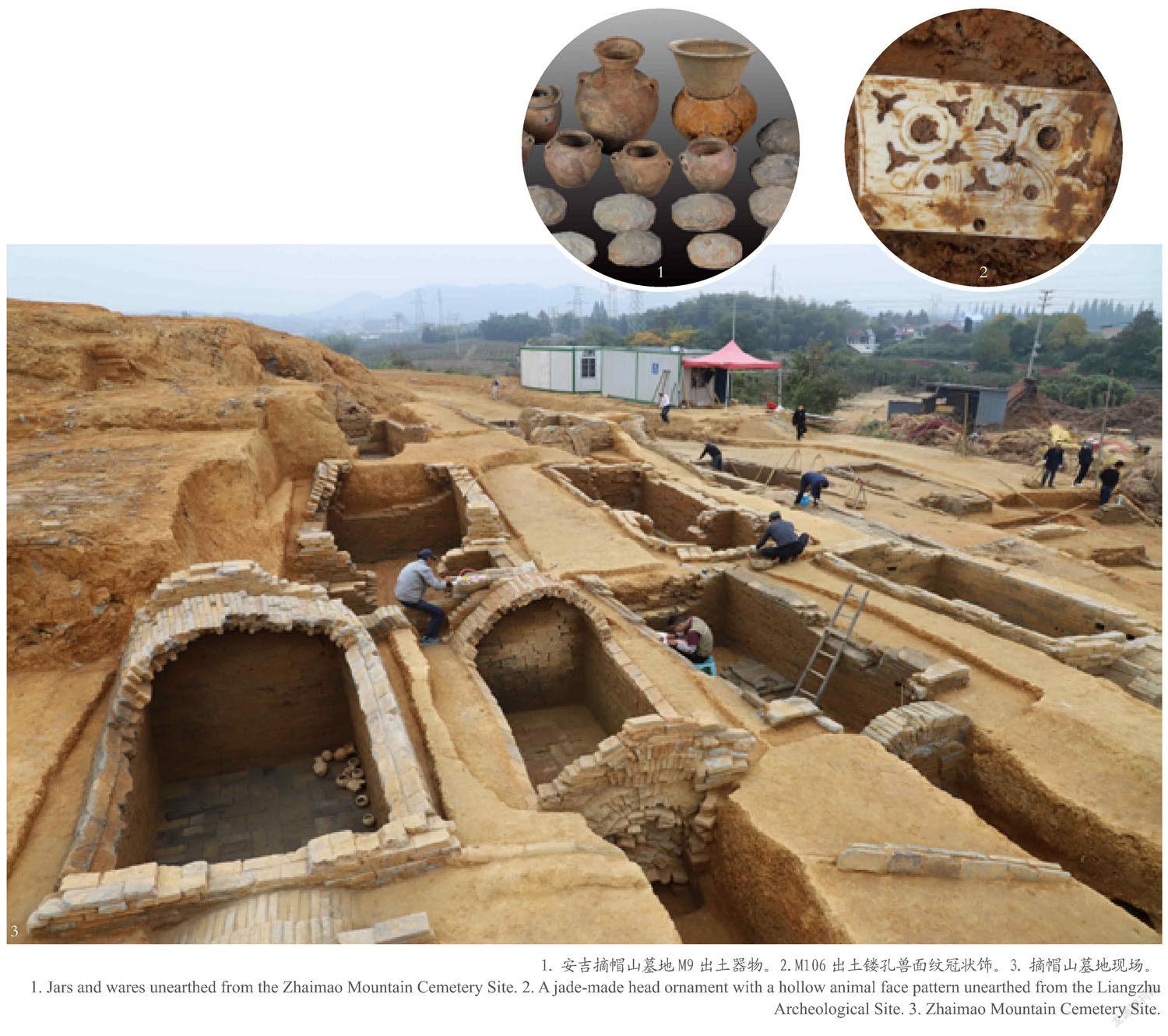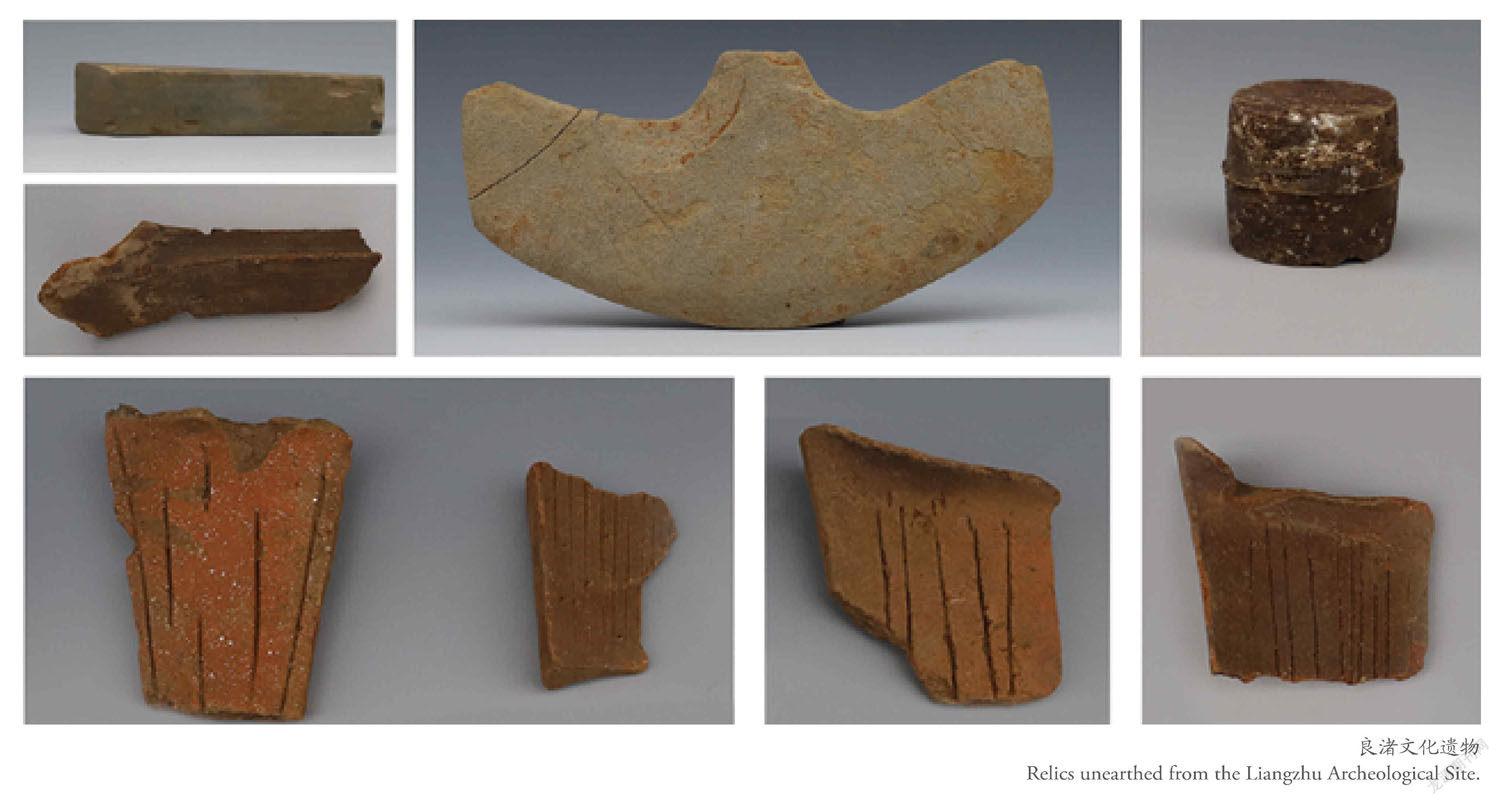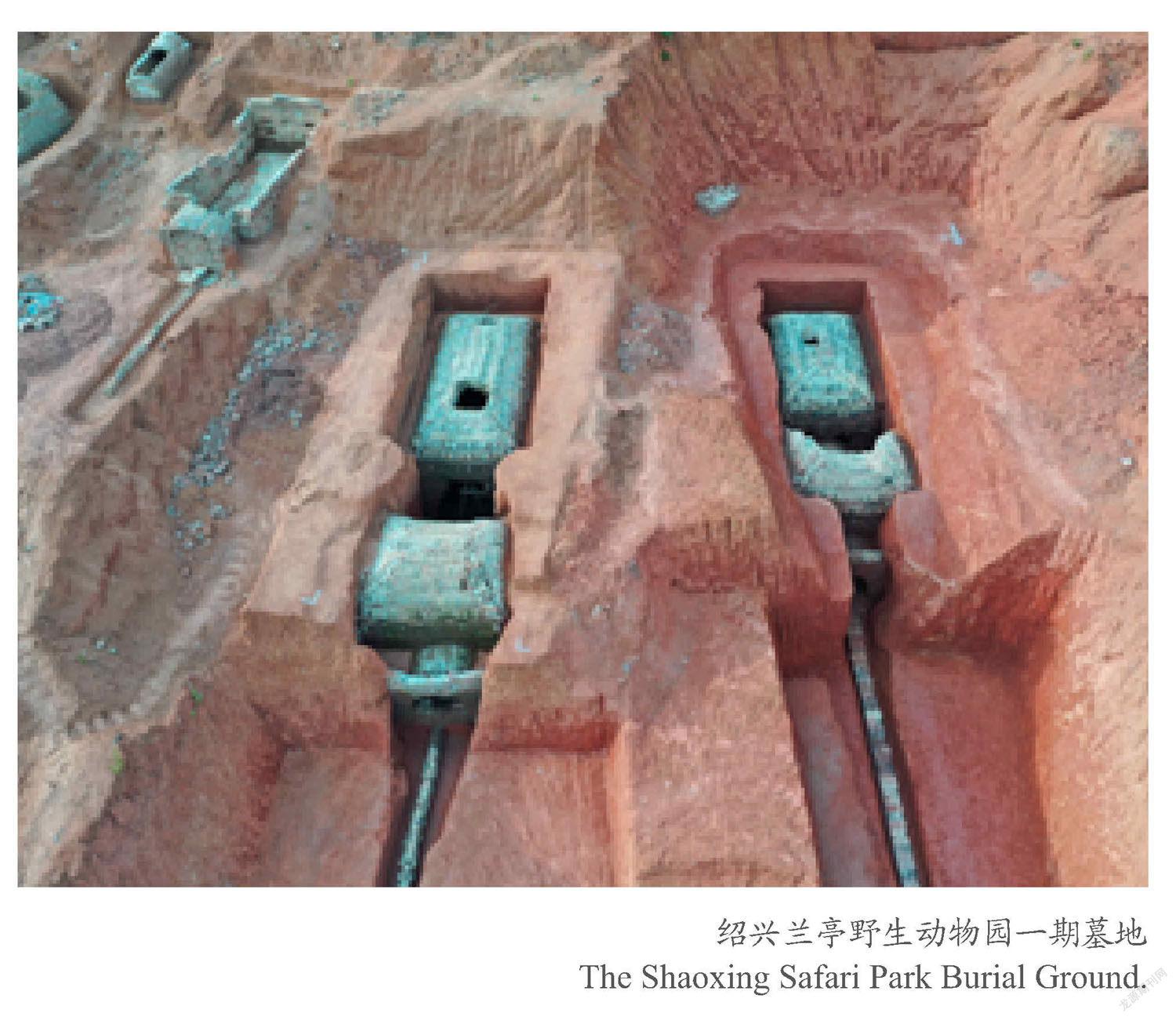中国考古百年,成绩单背后的浙江发展
林乐雨




从余杭良渚人施昕更主持对良渚遗址进行正式的田野考古发掘开始,浙江考古已深耕细作80余年。从万年上山再到千年宋韵,浙江考古可谓硕果累累。
2021年是中国现代考古学诞生100周年,2021年度浙江考古重大发现因此多了一层特殊的意义。
经过专家学者和大众的公开评选,2021年度“浙江考古十大重要发现“在杭州揭晓。 最终被评为十大重要发现的分别是舟山嵊泗黄家台遗址、杭州余杭瓶窑北村遗址、余杭径山小古城遗址、绍兴兰亭野生动物园一期墓地、湖州安吉孝丰摘帽山墓地、杭州 余杭跳头遗址、杭州富阳新登古城遗址、温州子城遗址、宁波慈城胡坑基遗址、宁波镇海吕岙遗址。
“发掘具有时代典型性的考古成果,为考古研究提供新的学术方向则是荣膺‘重大发现’的关键标准。” 浙江省文物考古研究所项目管理部主任兼商周考古室主任罗汝鹏说。
翻开这份“浙江考古奥斯卡”荣誉榜,与新石器时代相关的成果十占其四。包括胡基坑、北村、黄家台和吕岙遗址。罗汝鹏说,新石器时代石器一直是浙江考古的拳头产品,2021年新石器时期考古大丰收,进一步展现了浙江省在河姆渡、良渚文化时期的辉煌文明,丰富了两大遗址的研究范畴和深度,巩固了浙江新石器考古研究的龙头地位。
四大成果中,北村遗址与黄家台遗址更是为专家们津津乐道。
“北村遗址是难得一见的良渚早期文化遗存,比良渚古城的营建时期还要早。” 浙江省文物考古研究所科技考古室馆员姬翔说,“那时没有古城,没有水坝,却有着鲜明的等级分化。”考古专家在北山遗址发掘区发现有一条长灰沟,以灰沟为界,北部台地与南部地势较低处的墓葬呈现出明显等级分化。考古专家推测,灰沟和柱坑可能是一处围墙遗迹,它将台地上的贵族和台地下的平民隔离开来。
嵊泗岛开发史,最早的文献记载见于宋代。而黄家台遗址的发掘却表明,早在5000年前,这里便来了一群良渚人。他们是怎么来的?他们是这里最早的一批先民吗? 海洋考古是浙江考古未来的重要方向之一,黄家台遗址为研究新石器时代浙江人对海岛的开发提供了新课题与方向。
之江大地历经千年,孕育出璀璨的良渚文明和古越文化。而横亘在两大文化之间的商周时期,是否也暗藏着鲜为人知的文化高峰。
跳头遗址和小古城遗址的考古成果或许能够给我们带来信心,让大家产生更多期待。
2015年,为了加强东苕溪流域等地区古越文化研究,浙江省文物考古研究所成立“商周考古室”。跳头遗址和小古城遗址的成功发掘正是数年耕耘的果实。在商周考古室主任罗汝鹏看来,商周考古具有广阔的发掘前景,这个学术增长点浙江考古人已经预设多年。
人们对于历史认知多来源于先辈的文字记录,但史料的记载也有存疑的可能。考古专家们挖掘的遗迹则是历史文献最有力的佐证。
新登古城遗址考古项目负责人、杭州市文物考古研究所考古一室主任李坤介绍,据文献记载,唐昭宗大顺二年,唐末将领钱镠(后为吴越武肃王)命东安都将杜稜建城。北宋天禧五年筑新城。明嘉靖三十四年,倭寇侵浙,重筑城墙。此次发掘成果,印证了新登古城的历史真实。而温州子城遗址考古则发掘出子城西城墙、护城河两侧驳岸及各时期建筑遗迹。遗址中展现的城墙遗迹始建于五代时期,与史料记载相吻合。
浙江省考古学会会长刘斌说,有些大发现,比如孟姜村大墓、施岙稻田遗址、绍兴的一些墓地等,去年浙江省已经入选重大发现,还有一些,后续还要继续工作,综合考虑,选了今年“十大发现”,基本体现了2021年浙江省考古重要性、工作的重要性、保护的重要性。
今年是中国考古百年,也是中国考古大发展之年。如用一句话概括就是 :让陈列在广阔大地上的文化遗产活起来。
刘斌会长自豪地说,考古工作让浙江大地上的文化遗产重见天日,考古人是书写历史的人,也是“把论文写在大地上”的人。作为考古战线上的老兵,他认为考古工作要向广度和深度不断推进,从海岛到山区,从史前到唐宋元明清,从墓地、寺庙遗址向海塘、窑址等推进。从深度来讲,重视文化文物遗址的性质之外,还要加强对科技考古的重视,包括在保护上的重视。
还有一个学术的增长点是海岛考古。在舟山嵊泗,浙江考古人第一次发现了沙丘堆积的海洋生活的遗址,也看到了海岛和陆地之间的变迁、滞后性,这对浙江考古人研究浙江史前考古很重要。
浙江的文化谱系资料丰富,钱塘江以南地区,河姆渡文化研究有很多新材料,包括钱山漾遗址的新发现,对浙江考古人进一步完善史前文化谱系很重要。浙江考古人沿用了河姆渡四期这样的概念,年代上相当于崧泽文化,和长江下游的崧泽文化是一致的,学术上,也关系到河姆渡文化的分期,增加了很多丰富材料。
商周考古,余杭小古城的发现,余杭跳头遗址的发现,增加了商周考古的新内容。浙江的商周考古,当然还包括衢州孟姜村遗址——可能是姑蔑国的发现。
汉六朝时期的摘帽山遺址等也入选了。汉六朝是浙江在春秋战国后重大的发展期,后续需要放到一个大的历史层面来关注。包括天目窑的发掘,在瓷窑址发现上很重要,因为还要持续工作,所以没有进入“十大”,但却是浙江考古人新的学术增长点。
据刘斌会长介绍,几年来,浙江新的考古力量的增加,浙江考古所和杭州考古所编制的扩大,使浙江考古界迎来了一个大的发展期。比如从浙江省考古来讲,浙江大学城市学院成立了考古系,浙江大学也通过了考古学发展的规划。
探寻未知,颠覆认知,验证已知,这便是考古的魅力。
A Century of Archeological Achievements
in Zhejiang
By Lin Leyu
Since Shi Xingeng (1912-1939), a native of Liangzhu in Yuhang district, Hangzhou city, presided over the field archaeological excavation of the Liangzhu Ruins, in-depth archeological work in Zhejiang has been going on for more than 80 years. From the excavation of the Shangshan Site dating back to 10 thousand years ago, to the myriad Song dynasty ruins with a history of more than a thousand years, Zhejiang’s archeological work has made great achievements.
The year 2021 marks the 100th anniversary of the birth of China’s modern archeology, and major archeological discoveries in Zhejiang have added a special meaning to it.
After public appraisal and voting by experts, scholars and citizens, the Top Ten Major Archaeological Discoveries in Zhejiang in 2021 were announced recently in Hangzhou. They are the Huangjiatai Site (in Shengsi, Zhoushan), the Pingyao North Village Site (in Yuhang, Hangzhou), the Jingshan Ancient City Site (in Yuhang, Hangzhou), the Lanting Safari Park Burial Ground Phase I Site (in Shaoxing), Zhaimao Mountain Cemetery Site (in Anji, Huzhou), the Tiaotou Site (in Yuhang, Hangzhou), the Xindeng Ancient City Site (in Fuyang, Hangzhou), the Wenzhou Sub-city Site (in Wenzhou), the Hukengji Site (in Ningbo) and the Lu’ao Site (in Zhenhai, Ningbo).
“The key criterion for an archeological site to be rated as a ‘Top Ten’ is that it should be typical of the times and provide new academic directions for archeological research”, said Luo Rupeng, head of Project Management Department and director of the Shang and Zhou Archeological Office at the Zhejiang Provincial Institute of Cultural Relics and Archeology.
Opening the honor list of Zhejiang’s archeology in 2021, we can see that four of the ten major discoveries are related to the Neolithic Age, namely the Hukengji Site, the North Village Site, the Huangjiatai Site and the Lu’ao Site. The Neolithic stone tools have long been among the most significant archeological findings in Zhejiang. The great archeological haul of the Neolithic discoveries in 2021 demonstrates the brilliant civilization of Zhejiang in the Hemudu and Liangzhu cultural periods, further enriching the research scope and depth of the two sites, and consolidating Zhejiang’s leading position in Neolithic archeological research.
Of the four major discoveries, the North Village Site and the Huangjiatai Site are most frequently mentioned by experts.
“The North Village Site is a place of rare cultural remains in the early Liangzhu cultural period, even earlier than the construction of Liangzhu Ancient City,’’ said Ji Xiang, an expert from the Scientific and Technological Archeology Office of Zhejiang Provincial Institute of Cultural Relics and Archaeology. “No ancient city or dam was constructed, but there existed a distinct hierarchy among people.” Experts found a long ash ditch in the excavation area of the North Village Site, which shows an obvious hierarchy among the burials in the northern terrace and the lower parts of the south. Archeologists speculate that the ash ditch and column pit could be part of the wall remains that divided the nobles from the civilians.
The earliest written records on Shengsi Islands were found in the Song dynasty (960-1279). The Huangjiatai Site shows that a group of Liangzhu people came here as early as 5,000 years ago. How did they get there? Were they the earliest ancestors in the area? Maritime archeology is one of the main focuses of Zhejiang archeology in the future, and the Huangjiatai Site provides a new topic for researching the development of islands by Zhejiang people in the Neolithic Age.
Through thousands of years, the land of Zhejiang has given birth to the brilliant Liangzhu and Yue cultures. What is the story of the Shang (ca. 1600-1046 BC) and Zhou (1046-256 BC) periods that lie between them?
The Tiaotou Site and the Jingshan Ancient City Site may bring us some answers.
In 2015, in order to strengthen the study of the ancient Yue culture in Dongtiaoxi Basin, Zhejiang Provincial Institute of Cultural Relics and Archaeology established the “Shang and Zhou Archaeology Office”. The successful excavation of the Tiaotou Site and the Jingshan Ancient City site is the fruit of several years’ hard work. In Luo’s opinion, Shang and Zhou archeology has a promising prospect.
People’s perception of history mostly comes from the writings of their ancestors, however, it is possible that these records may not be entirely credible. The relics excavated by archaeological experts are the most powerful corroborative evidence for historical documents.
Liu Bin, chairman of Zhejiang Provincial Archaeological Society, stated that some major discoveries such as the great tomb site at Mengjiang village, the Shi’ao Paddy Field Site and some burial grounds in Shaoxing have been listed as major discoveries. The ten major discoveries have been selected based on a comprehensive evaluation, fundamentally embodying the importance of protective archeological work of Zhejiang in 2021.
This year marks the 100th anniversary of China’s archeology, which is leaping into a new stage of great development.
Liu proudly says that archaeological work has revived the cultural heritage of Zhejiang province, and the archeologists are people who write the history and research papers on the earth. As an archeological veteran, he reckons that archeological work should be advanced in breadth and depth. In terms of depth, great importance should be attached not only to the cultural and relic sites but also scientific and technological approaches in archeology, including protection measures.
Another focus is academic growth. When conducting maritime archeology in Shengsi county, Zhoushan city, archeologists discovered sand dunes of marine life for the first time. The transition and lag between islands and land is important to our study of Zhejiang prehistorical archeology.
Zhejiang is rich in its cultural lineage. In the south of the Qiantang River, materials are abundant for Hemudu cultural research, including the new discovery at the Qianshanyang Site, which is very important to further improve the prehistoric cultural lineage. The concept of Hemudu Phase IV corresponds to the Songze Culture in chronological terms and is consistent with the Songze Culture in the lower reaches of the Yangtze River.
The discoveries in the Ancient City Site (Yuhang) and the Tiaotou Site (Yuhang) added new contributions to Zhejiang’s archeological work on the Shang and Zhou dynasties, which includes the Mengjiang Village Site (Quzhou), leading to the discovery of the possible Gumie State.
The Zhaimao Mountain Site was also listed in the ten discoveries. It is a major period of archeology in Zhejiang after the Spring and Autumn (770-476 BC) and the Warring States (476-221 BC) periods. Besides, the Tianmu Kiln Site is important in porcelain kiln sites discovery, though not listed in the ten major discoveries.
Zhejiang archeology has ushered in a period of great development. According to Liu, the new archeological power of the province has increased in recent years, and more people are employed into the Provincial Archaeology Institute and Hangzhou Archaeology Institute.
The charm of archaeology lies in exploring the unknown, subverting the presupposed and verifying the uncertain.
Top Ten Major Discoveries of Zhejiang Archaeology in 2021
The first dune site excavated in Zhejiang province traced the history of human settlement and island development of Shengsi back to nearly 5,000 years ago.
The site boasts of the only six-dragon-head jade bracelet unearthed so far. It revealed the development of the aristocratic class before the construction of the Liangzhu Ancient City, and provided new information for studying the early society of Liangzhu, class differentiation and exploring the rise of the Liangzhu Ancient City.
It is the place where a Shang dynasty high-platform building was first discovered in China. It refreshed the archaeological understanding of the architectural history of the Shang and Zhou dynasties in southern China.
The site saw 55 tombs from the Warring States Period to the Ming (1368-1644) and Qing (1616-1911) dynasties unearthed. Two large tombs of high-grade belonging to the Western Jin dynasty (265-317) were excavated, which are rare in Zhejiang province; they will serve as a crucial reference to judge similar tombs and cultural relics of the same period. The two tombs are of a similar age to that of the master calligrapher Wang Xizhi (303-361) and located in Lanting.
A total of 105 tombs dating back to the Han (202 BC-220 AD) and the Six Dynasties (222-589) were sorted out. They were mostly from the late Eastern Han dynasty (25-220) to the State of Wu (229-280) period, and a few were tombs of the Jin dynasty (265-420). They are densely arranged, which is rare in Zhejiang province.
A relatively clear bronze-casting settlement site of the late Shang dynasty was discovered for the first time in the lower reaches of the Yangtze River.
Well-preserved remains of the Tang (618-907), Song (960-1279), Ming and Qing dynasties with a clear structure confirm the historical existence of the Xindeng Ancient City and its uniqueness of being built around the mountains with a single city wall. The discovery lays an important foundation for the restoration and display of the ancient city and for the protection and its application for a World Heritage Site status later. It also provides important materials for the study of the structure and construction technology of the city gate since the Tang dynasty.
The discovery of the west city wall of Wenzhou Sub-city, the revetment on both sides of the moat and the remains of each period once again confirms the authenticity of the historical materials of “The Ryoal Qian family built the inner and outer city”. It is of great value for studying the hollow square structure layout of Wenzhou Ancient City, the landscape city pattern, the construction mode and the evolution of its walls. It has accumulated precious materials for the study of urban archeology and southern urban history in China.
Identified as a waterfront settlement in the late Hemudu Culture with various types of pillar pits in the remains, it presents a variety of housing foundation construction methods, and provides a clearer material for studying the development and evolution of housing construction technology in the late Hemudu Culture. The relics with cultural characteristics of the Taihu Lake area were unearthed from the site, reflecting the penetration and influence of the Songze Culture around the lake on the Ningbo and Shaoxing area.
The road remains of paddy fields and their attached wooden structure during the Liangzhu Culture period were unearthed, and the Yue kiln celadon in the late Tang dynasty and the Five Dynasties, the Longquan celadon from the Song, Yuan and Ming dynasties were excavated, laying a good foundation for further deepening the study of environmental changes, subsistence economy and settlement formation from Neolithic to Bronze Age in the coastal region south of the Qiantang River. It also provides rich information for the study of economic development, ancestral life and commercial trade history of the Ningbo coastal areas since the Tang and Song dynasties.

